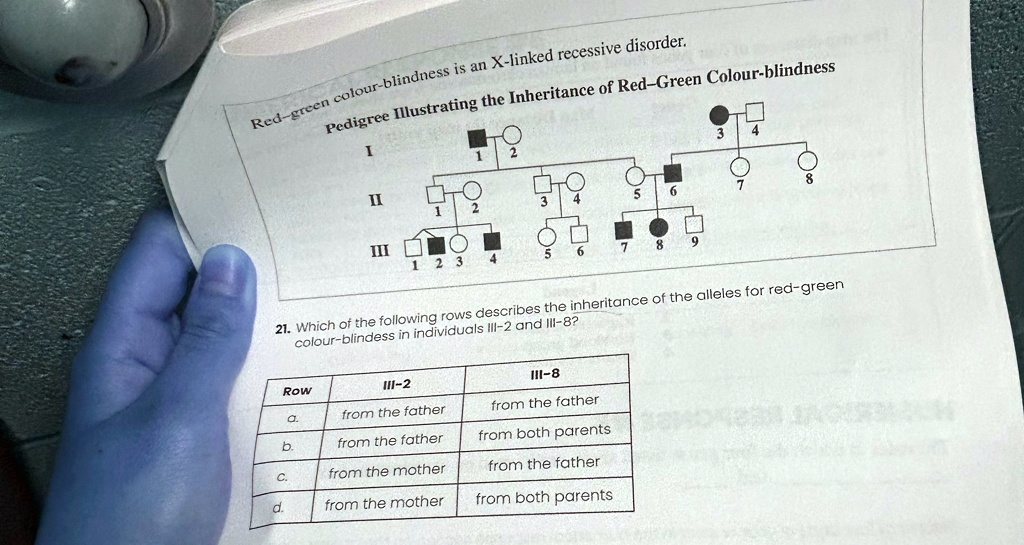Red-green colour-blindness is an X-linked recessive disorder. Pedigree Illustrating the Inheritance of Red-Green Colour-blindness I II III 1 2 3 4 5 6 7 8 21. Which of the following rows describes the inheritance of the alleles for red-green colour-blindess in individuals III-2 and III-8? Row III-2 III-8 a. from the father from the father b. from the father from both parents c. from the mother from the father d. from the mother from both parents

The Correct Answer and Explanation is:
The correct answer is: d. from the mother from both parents
Explanation:
Red-green colour-blindness is inherited in an X-linked recessive manner. This means the gene responsible is located on the X chromosome, and an individual must inherit a mutated copy to express the trait. Males (XY) have only one X chromosome, while females (XX) have two.
For Individual III-2 (a male):
- Males inherit their X chromosome from their mother and Y chromosome from their father.
- Since III-2 is affected and has only one X chromosome, that X must carry the recessive allele.
- His mother must have passed on the affected X, whether she is a carrier (heterozygous) or affected (homozygous recessive).
- His father could not have passed an X chromosome to him, so the allele must have come from the mother.
For Individual III-8 (a female):
- Females have two X chromosomes, one from each parent.
- III-8 is affected, which means both X chromosomes must carry the affected allele.
- Therefore, she inherited one affected X chromosome from her mother, who must be a carrier or affected, and one affected X chromosome from her father, who must be affected himself (as males only have one X chromosome and express any allele on it).
- Hence, III-8 received the disorder from both parents.
This pattern is consistent with the X-linked recessive inheritance and the observed phenotype in the pedigree. Females require two copies of the allele to be affected, while males only need one. That’s why it’s more common in males but still possible in females if both parents contribute affected alleles.
